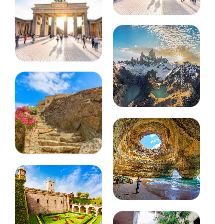Visiting the Jura: 16 must-sees
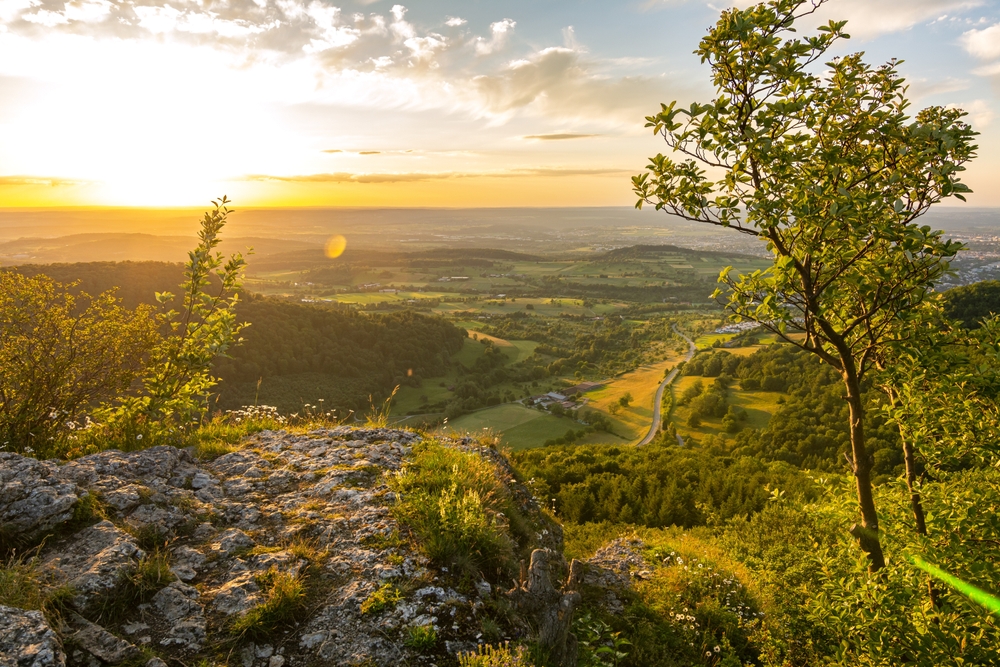
The Jura, part of the Bourgogne-Franche-Comté region, is one of France’s most fascinating regions. With its hilltop villages ranked among the Most Beautiful Villages in France, its turquoise lakes, its spectacular waterfalls and its unique gastronomic heritage, the Jura offers a concentrate of authenticity in the heart of exceptional landscapes. From the Hérisson waterfalls to the Fort des Rousses ripening caves, from the Château-Chalon vineyards to the salty thermal waters, this natural destination promises unforgettable discoveries.
200 audioguided tours for cities all around the world
Download1. The Hérisson waterfalls
Listed as one of France’s Grands Sites, the Hérisson waterfalls are one of the Jura’s natural gems. This torrent, which takes its name from the word “Yrisson” meaning “sacred water”, rises at Saut Girard and meanders for several kilometres, creating a succession of spectacular waterfalls. The hiking trail, which is accessible to all, takes you from waterfall to waterfall: the 65-metre-high Saut de l’Éventail, the 60-metre-high Grand Saut and the Éventail, which cascades like a curtain over the limestone rock. These waterfalls offer a magnificent spectacle all year round, particularly impressive in spring when the snow melts.
Also in the Dole guide :
2. Baume-les-Messieurs
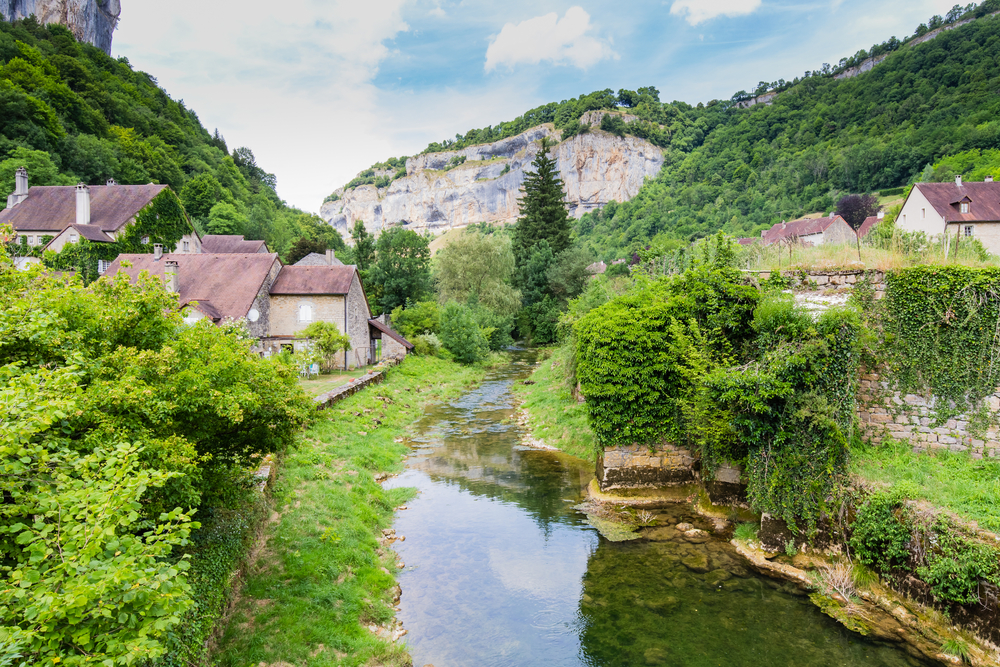
Nestling in the heart of a spectacular retreat, Baume-les-Messieurs (39210 Baume-les-Messieurs, rated 4.6/5 on Google out of 2847 reviews) is one of France’s Most Beautiful Villages. This village of 200 souls boasts an exceptional heritage: a Benedictine abbey founded in the 6th century, some of the most beautiful caves in Europe, with the highest underground vertical in the Jura, and the Tufs waterfall fed by the Dard, which mysteriously gushes out at the bottom of the retreat. The Imperial Abbey, witness to a thousand years of monastic history, is home to some remarkable artistic treasures, including a 16th-century Flemish altarpiece.
3. Visiting Dole
Download the audio-guided tour to discover Dole on foot and on your own
The former capital of Franche-Comté, Dole invites you to discover its heritage treasures along a 19-stop audio tour. The birthplace of Louis Pasteur, this city of art and history reveals its rich past through its medieval streets, its majestic Notre-Dame collegiate church and its picturesque canals. The Navaway tour guides you through the must-see sites: the Louis Pasteur Museum, Place aux Fleurs, Quai Pasteur and the remains of the old fortifications. Let the Navaway audio tour be your guide as you explore this city of exceptional heritage.
4. Vouglans lake
France’s third-largest artificial lake, at 35 kilometres long, Lac de Vouglans offers emerald-green waters in an unspoilt natural setting. There are three beaches: Mercantine, Bellecin and Surchauffant, all equipped for swimming and water sports. The lake offers a multitude of activities: canoeing, stand-up paddling, fishing, scenic cruises and walks along the paths that line its shores. The lookouts at Meix and Les Bourlaches offer spectacular views of this “little Jura sea”, which is particularly photogenic at sunset.
5. Château-Chalon
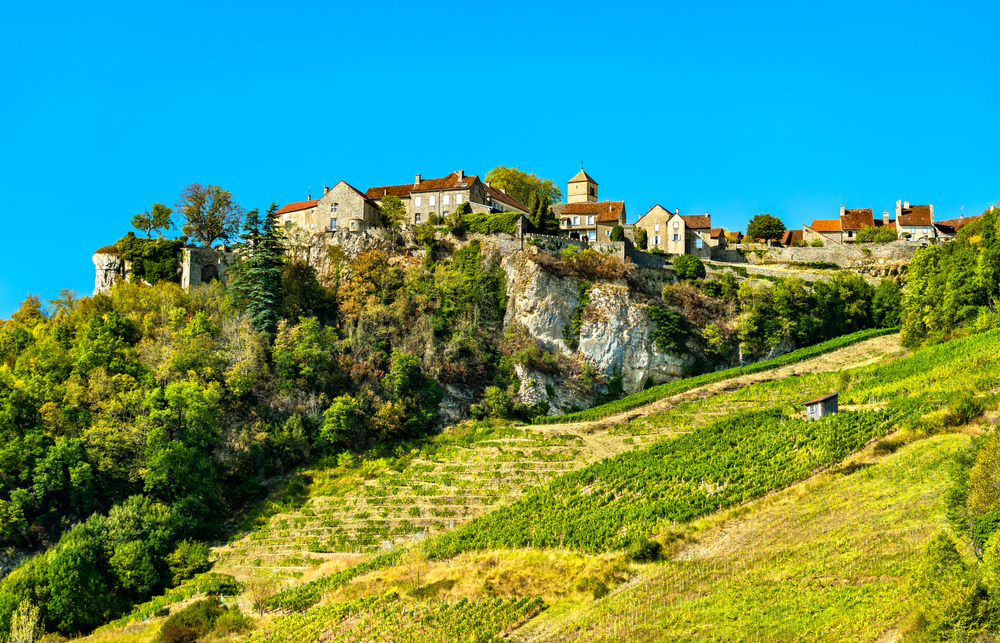
Perched on a cliff overlooking the Seille valley, Château-Chalon (39210 Château-Chalon, rated 4.5/5 on Google out of 1256 reviews) is one of the Most Beautiful Villages in France. This village of 150 inhabitants is the birthplace of the legendary vin jaune, a unique nectar made from the Savagnin grape variety. The abbey’s Benedictine nuns developed this exceptional wine-making expertise as far back as the Middle Ages. Five belvederes offer breathtaking views over the AOC vineyards and the Bresse valley. The cellars and wineries offer tastings of this “king of wines”, which ages for six years and three months under a veil of yeast.
6. Arbois
The capital of Jura wines and France’s first AOC (1936), Arbois (39600 Arbois, rated 4.3/5 on Google out of 2105 reviews) is renowned for its winegrowing heritage and its ochre-coloured winegrowers’ houses. This charming town was home to Louis Pasteur, whose family home can still be visited today. The vineyards of Arbois produce the five Jura appellations: Chardonnay, Savagnin, Poulsard, Trousseau and Pinot Noir, not forgetting the famous vin jaune and vin de paille. Nearby, don’t miss the Tufs waterfall at Planches-près-Arbois, an exceptional natural site where water carves out the limestone rock to create natural turquoise pools.
7. Lake Chalain
At 232 hectares, Lake Chalain is the largest natural lake in the Jura, with turquoise waters worthy of the finest tropical lagoons. Listed as a UNESCO World Heritage Site for its Neolithic archaeological sites, this lake of glacial origin has two supervised beaches in high season. The Doucier beach and the Domaine de Chalain beach offer all the facilities you need for a great day’s swimming. There’s no shortage of activities: pedalos, canoes and kayaks for hire, hiking trails around the lake and shaded picnic areas. The belvedere at Fontenu offers a breathtaking panoramic view of this natural gem.
8. Saint-Claude
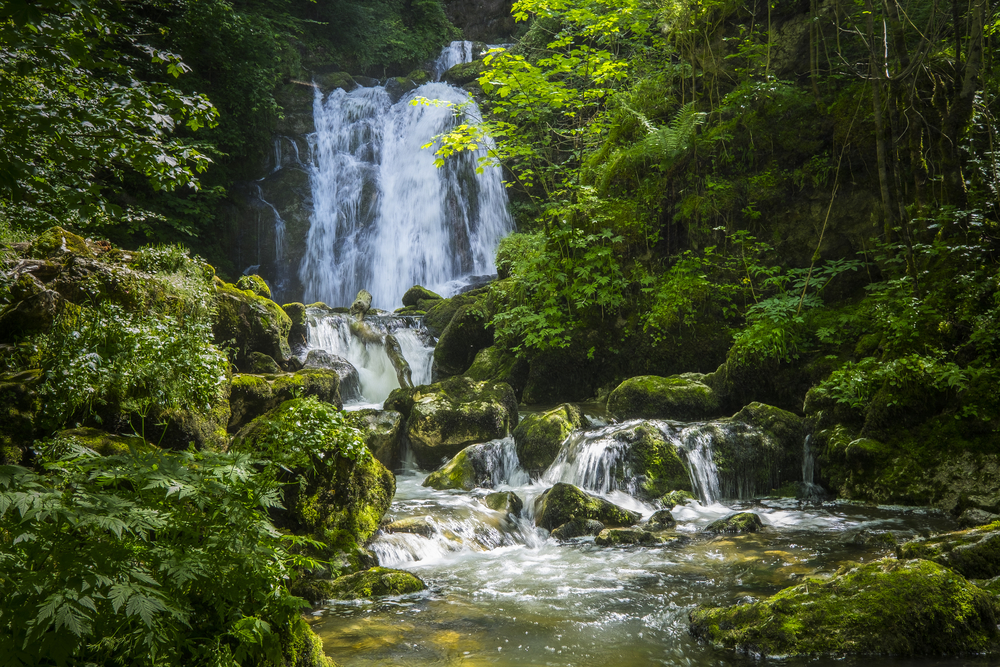
The world capital of pipes and diamonds, Saint-Claude (39200 Saint-Claude, rated 4.1/5 on Google out of 3421 reviews) has a long tradition of exceptional craftsmanship. The Pipe and Diamond Museum, the only one of its kind in the world, retraces the history of these ancestral skills that have made the town’s reputation since the 16th century. The Gothic cathedral, a former Benedictine abbey, and the Abbey Museum complete the cultural tour. Saint-Claude is also an ideal base for exploring the Haut-Jura Regional Nature Park, with its peaks, spruce forests and mid-mountain landscapes.
9. Salins-les-Bains
Listed as a UNESCO World Heritage Site, the Grande Saline de Salins-les-Bains (39110 Salins-les-Bains, rated 4.2/5 on Google out of 1847 reviews) bears witness to a thousand years of “igneous salt” production. This former royal saltworks has preserved its 13th-century underground galleries and its 19th-century hydraulic pump, which is still in operation. The Salt Museum traces the history of the white gold that made the region so rich. The spa town also offers the benefits of its salt water, which is naturally rich in trace elements. The ThermaSalina thermal baths welcome spa visitors and day-trippers in an unspoilt Belle Époque setting.
10. Les Rousses and the Fort des Rousses
A family resort in the Jura mountains, Les Rousses (39220 Les Rousses, rated 4.2/5 on Google out of 2756 reviews) combines winter sports with its cheese-making heritage. The Fort des Rousses, a converted military fortress, now houses the Juraflore maturing cellars where 100,000 wheels of Comté cheese mature in exceptional conditions. A guided tour of these underground cathedrals reveals the secrets behind the maturing of this king of French cheeses. In winter, the ski area offers 50 kilometres of downhill ski runs and 220 kilometres of cross-country ski runs. In summer, the area is ideal for hiking, with panoramic views over Lake Geneva and the Alps.
11. Poligny, capital of the Comté region
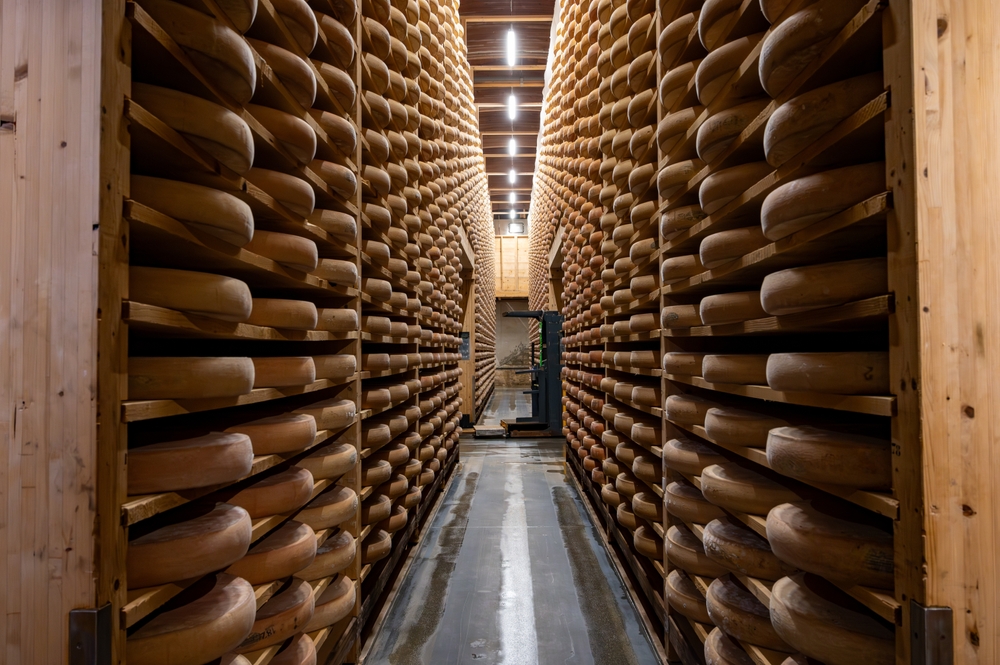
Nicknamed the Comté capital of the world, Poligny (39800 Poligny, rated 4.2/5 on Google out of 1632 reviews) is home to cheese maturing cellars, cheese dairies and cheese schools. The Maison du Comté offers a complete immersion in the world of this PDO cheese: from milking Montbéliard cows to maturing in the cellar, via traditional production in the cheese dairy. The Juraflore, Monts et Terroirs and other Polignard ripeners have over 200,000 wheels of cheese maturing in their cellars. Tasting workshops allow you to appreciate the nuances of taste in this cheese, with 83 different flavours depending on the region and the maturing period.
12. Lons-le-Saunier
Prefecture of the Jura and birthplace of Rouget de Lisle (composer of the Marseillaise), Lons-le-Saunier (39000 Lons-le-Saunier, rated 4.1/5 on Google out of 2543 reviews) combines historical heritage with thermal well-being. The Lédonia thermal baths harness the virtues of naturally salty waters for rheumatology cures and well-being treatments. The pedestrianised town centre invites you to discover the eclectic architecture of the Rue du Commerce, one of the longest pedestrianised streets in France. The Musée des Beaux-Arts and the municipal theatre complete the cultural offering of this Jura capital with its privileged living environment.
13. Haut-Jura Regional Nature Park
Covering 165,000 hectares, the Haut-Jura Regional Nature Park protects exceptionally rich mid-mountain landscapes. The Crêt de la Neige, the highest point at 1720 metres, offers a breathtaking panorama of the Alps and Lake Geneva. This mosaic of spruce forests, peat bogs, lakes and pastoral valleys is home to some remarkable wildlife, including lynx, capercaillie and European owl. There are countless outdoor activities on offer, including hiking along the 2,500 kilometres of signposted trails, mountain biking, snowshoeing and cross-country skiing on the Grande Traversée du Jura. The Maison du Parc in Lajoux is the place to go to find out all you need to know about the area.
14. Les Pertes de l’Ain
A unique geological curiosity, the Pertes de l’Ain (39360 Bourg-de-Sirod) are a breathtaking natural spectacle. The peaceful River Ain suddenly becomes a tumultuous torrent as it cuts through a narrow 12-metre gorge, creating a spectacular bubbling effect on the limestone rocks. A one-hour trail from Bourg-de-Sirod takes you as close as possible to this fascinating phenomenon. The limestone cliffs that surround the site are home to some remarkable flora and offer breathtaking views of this “loss” where the river seems to disappear into the bowels of the earth before re-emerging further on.
15. The Upper Saine Valley
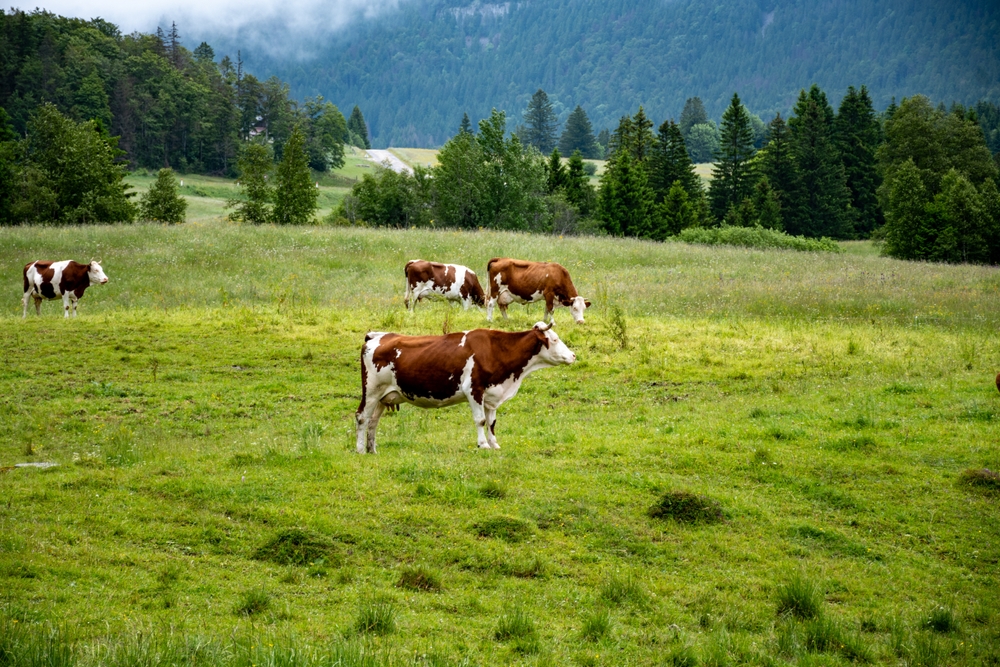
A protected natural site, the Haute Vallée de la Saine winds for 18 kilometres between Foncine-le-Haut and Lemme, revealing gorges, waterfalls and chasms in a fascinating Jura plateau. This “sacred” river, according to its Celtic etymology, offers breathtaking panoramas from the viewpoints of the Roche fendue and the Ruines. The Langouette and Malvaux gorges, the Pisse jump and the Bief de la Ruine waterfalls can all be discovered on signposted walks. In winter, the area becomes a cross-country skiing paradise, with the nearby Les Rousses ski resort offering magical landscapes in the snow.
16. Nozeroy
The former town of the Dukes of Chalon, Nozeroy (39250 Nozeroy, rated 4.3/5 on Google out of 856 reviews) has preserved its medieval character behind its 14th-century ramparts. The Clock Tower, built in the 15th century, keeps watch over this small town of character in Burgundy-Franche-Comté. Every summer, the cobbled streets of the town are the setting for a medieval festival that revives the traditions of yesteryear. Fans of local produce will love the butter from the Val de Miges cooperative and the Comté Rix-Trébief cheese. The Nozeroy Urban Trail, a fun and sporting race held in May, attracts runners and spectators in an exceptional natural setting between town and country.
In conclusion, to visit the Jura is to take a trip to the heart of unspoilt nature, where each site reveals unique treasures. From hilltop villages to turquoise lakes, from majestic waterfalls to traditional cheesemaking, this authentic destination will win you over with its diversity and authenticity. For the best possible discovery of this exceptional region, don’t hesitate to let yourself be guided by the Navaway audio-guided itinerary, which will accompany you on your finest Jura discoveries.
Frequently asked questions
When is the best time to visit the Jura?
The best time to visit the Jura is from May to September, when you can enjoy outdoor activities, swimming in the lakes and hiking. Autumn (October-November) offers magnificent colours in the forests. Winter transforms the Jura into a Nordic sports paradise, with snow generally guaranteed from December to March.
How long does it take to visit the Jura?
One week is enough to discover the main must-see sites in the Jura. Allow 3-4 days minimum for an initial overview, including the Hérisson waterfalls, Baume-les-Messieurs, one or two lakes and a few villages. For a full exploration including hiking and various activities, 10-15 days will not be too much.
Which typical Jura dishes are a must?
Must-try specialities include Comté cheese in all its forms, Comté fondue, coq au vin jaune et aux morilles, poularde de Bresse, croûtes aux morilles, and on the sweet side Lélex waffles and pain d’épices. Don’t forget to sample the wines of the Jura: Chardonnay, Poulsard, Trousseau, and above all the legendary vin jaune.
Is the Jura suitable for families with children?
Absolutely! The Jura has plenty to offer the whole family: supervised swimming in the lakes, easy hiking trails, visits to farms and cheese dairies, the caves at Baume-les-Messieurs, adventure parks and, in winter, ski resorts suitable for beginners. Accommodation and restaurants are generally very family-friendly.
200 audioguided tours for cities all around the world
Download